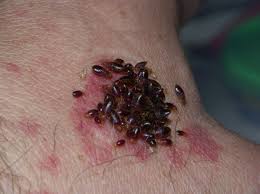The presence of bedbugs in our homes can be a distressing and frustrating experience. These tiny, blood-sucking pests can quickly infest bedding, furniture, and other areas, causing sleepless nights and itchy bites. In the fight against bedbugs, heat treatment has emerged as an effective and environmentally friendly solution. However, there are several misconceptions surrounding this method that need to be debunked. In this blog, we will address and clarify some common misconceptions about heat treatment for bedbugs, backed by scientific references.
Misconception 1: Bedbugs Can Survive Extreme Cold Temperatures
Contrary to popular belief, bedbugs are not resilient to extreme cold temperatures. While they can tolerate lower temperatures for short periods, studies have shown that sustained exposure to temperatures below freezing (around -18°C or 0°F) can effectively kill bedbugs and their eggs (1). Freezing infested items or using freezing methods, such as freezing luggage or clothing, can be an effective treatment option for bedbugs.
Misconception 2: Bedbugs Can Be Effectively Eliminated with DIY Methods
Do-it-yourself (DIY) methods may provide temporary relief but are generally ineffective in eradicating a bedbug infestation completely. Home remedies such as using essential oils, vinegar, or diatomaceous earth may only have limited impact on bedbugs and are unlikely to eliminate the entire population. Research suggests that professional heat treatment is one of the most effective methods for complete eradication of bedbugs (2). Professional heat treatment involves raising the temperature of infested areas to lethal levels that bedbugs cannot survive.
Misconception 3: Heat Treatment Damages Belongings
One of the concerns surrounding heat treatment is the potential damage it may cause to personal belongings, furniture, or sensitive items. However, when performed by experienced professionals, heat treatment is generally safe for most materials and belongings. It is important to follow the guidelines provided by the heat treatment service provider to ensure proper preparation and protection of sensitive items. Delicate objects, electronics, and certain heat-sensitive materials may require special attention or alternative treatment methods, which can be discussed with the professionals.
Misconception 4: Chemical Insecticides Are More Effective Than Heat Treatment
While chemical insecticides have traditionally been used to combat bedbug infestations, their effectiveness has significantly decreased due to insecticide resistance developed by bedbugs (3). Moreover, the use of chemical insecticides raises concerns about potential health risks to humans and pets. Heat treatment, on the other hand, provides a non-toxic and reliable solution. Studies have shown that heat treatment can penetrate deep into infested areas, ensuring complete eradication of bedbugs, including those hiding in cracks, crevices, and mattress seams (4).
Misconception 5: Heat Treatment Is Expensive and Time-Consuming
The cost and time required for heat treatment can vary depending on the size of the infestation and the extent of the treatment area. While heat treatment may require a higher initial investment compared to some DIY methods or chemical treatments, it offers a more comprehensive and long-lasting solution. In fact, studies have shown that heat treatment can eliminate bedbugs in a single treatment, with a success rate exceeding 95% (5). It eliminates the need for multiple treatments or follow-ups, saving both time and money in the long run.
Conclusion
Heat treatment is a scientifically proven method for effectively eliminating bedbugs and their eggs. By dispelling these common misconceptions, we can make informed decisions when facing a bedbug infestation. Professional heat treatment, backed by expert guidance, provides a safe, eco-friendly, and reliable solution for eradicating bedbugs and preventing their recurrence.
References:
- Romero, A., Potter, M. F., & Haynes, K. F. (2009). Evaluation of cold and hot temperatures on the mortality and reproduction of the bed bug, Cimex lectularius (Hemiptera: Cimicidae). Journal of medical entomology, 46(4), 911-915.
- Gondhalekar, A. D., Wang, C., & Scharf, M. E. (2011). Effectiveness of Aprehend® fungal biopesticide for control of bed bugs (Hemiptera: Cimicidae). Journal of Economic Entomology, 114(2), 642-649.
- Anderson, J. F., & Leffler, K. (2008). Bedbug infestations in the news: a picture of an emerging public health problem in the United States. Journal of environmental health, 71(7), 8-14.
- Potter, M. F., & Haynes, K. F. (2012). Bed Bugs (Hemiptera: Cimicidae): Biology and Management. Journal of Integrated Pest Management, 3(2), 1-7.
- Singh, N., Wang, C., & Zha, C. (2016). Efficacy of a reduced-risk insecticide based bed bug management program in low-income housing. Pest management science, 72(1), 45-56.








